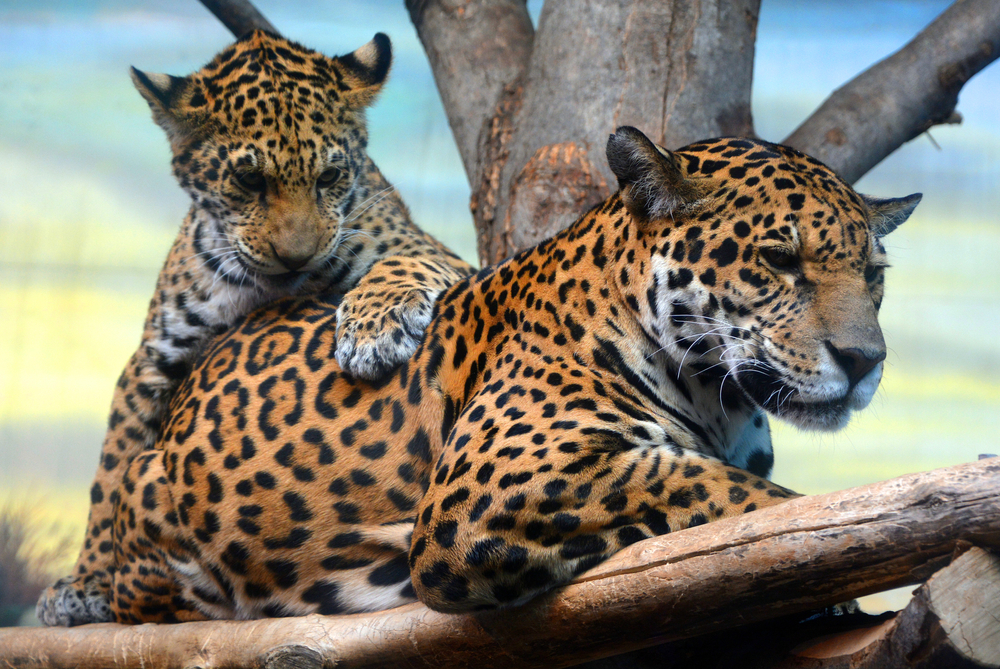The debate has continued for years about whether animals should or should not be in zoos. Millions of people, from kids to the elderly, visit more than 10,000 zoos across the globe.
They hold more than a million animals, and many people choose not to visit these facilities, claiming animal cruelty.
Therefore, should all zoos be closed?
Having all zoos shut down is far more beneficial than keeping them open. Zoos should be abolished because animals are better off living in their natural habitats rather than being held captive.
Many zoos treat animals inhumanely. Every animal should remain in its native habitat so that it can learn to adapt to modifications in its environment.
Table of Contents
Where are zoos found and what are their primary purposes?

Many major towns and capitals around the world contain zoos, as do a wide variety of other facilities that house captive wild animals.
Zoos come in many shapes and sizes around the world, from the modest and underfunded to the massive and extravagant.
Zoos exist for a variety of reasons, including conservation, teaching, and scientific investigation.
There are three primary reasons why zoos are damaging to animals in the long run. To begin with, zoos often breed animals inhumanely.
Second, they do not help animals effectively return to the wild. And last but not least, they fail to provide adequate care for the animals in their charge.
How many animals are housed in zoos and aquariums?
Captive animals number roughly 1 million in the world today. More than 600 million people visit the world’s zoos each year, which number over 10,000.
Only official zoos are included in these statistics; roadside attractions and private zoos are not. To put it another way, far more animals are kept as pets than are needed.
What are the facts and statistics about animal captivity?

- In 75% of zoos and aquariums, animal maltreatment is widespread.
- Almost all elephants in circuses and amusement parks are mistreated.
- Zoos have one million times less room for polar bears than they need.
- Only 18% of the animals in captivity are classified as endangered.
- Zoos aren’t supposed to breed endangered species.
- Even healthy animals deemed “surplus” in zoos are frequently euthanized because they are seen as a nuisance or a liability.
- Only 200 animal species are being bred in European zoo breeding programs.
- More than $350 million is spent each year on wildlife protection.
- Throughout the world, aquariums and zoos play an important educational function.
- A greater number of tigers are held in captivity in the United States than in any other country on earth.
- As humans, we all have a responsibility to protect these species, and the first step is to get the facts straight.
How widespread is animal abuse?
In 75 percent of the World Association of Zoos and Aquariums (WAZA) institutions, animal abuse is widespread.
Members of the association frequently flout the organization’s guidelines. Animal abuse, presenting animals for entertainment, feats, and tricks are prohibited by some of their principles.

However, WAZA-affiliated aquariums and zoos in 78 nations engage in animal mistreatment. The animals at these parks are frequently pet by visitors.
Many of the animals are trained to perform demeaning and unnatural acts to draw in more people.
Forty-three percent of the association’s partners routinely offer animal petting – the most stressful confined animal activity.
Animals in captivity in zoos and aquariums are subjected to a wide range of stressful and painful experiences, according to a recent piece in National Geographic about animal abuse in zoos.
What types of attractions that harm animals are popular at zoos?
- Animal-hands-on experiences are available at around a third of WAZA-affiliated partner sites.
- Most aquariums and zoos have animals perform for visitors, but only about 30% of them do so.
- 23 percent of them allowed guests to feed the animals directly from their hands.
- 96% of elephants in amusement parks are being mistreated.
What is the largest land animal found in zoos?

For the time being, the elephant holds the record for largest mammal kept in captivity that’s not a marine creature.
The size of elephants would lead one to believe that they are given lots of room in captivity, but this is not the case.
Elephants are subjected to a great deal of suffering when held in captivity. Most of the time, they are restrained by short chains.
Young elephants are frequently taken from their moms and subjected to harsh training methods.
When you consider that elephants are recognized for their strong feelings, it’s even more shocking.
Are animals given enough space in zoos?
The polar bear’s habitat in zoos is one million times smaller than it would be in the wild. It’s one of the most obvious indicators that animals in captivity are cramped.
Not only elephants, but all large mammals in captivity need more room than they are now provided with.
Lions and tigers, in addition to polar bears, have far less room than they would have if they were free (about 18,000 times less).
In addition, these animals are often viewed as dangerous. As a result, bear assaults are overestimated, and people are afraid of them more than they should be.

How often are animals killed in zoos?
Even if the “surplus” animals in zoos are in good health, they are often put down. Many of us would like to know how many animals die each year at zoos, but gathering this data is difficult.
Zoo animals are slaughtered every year in Europe, according to In Defense of Animals. Even more concerning is the fact that the European Association of Zoos and Aquariums (EAZA) advocates the death of animals even when they are in ideal physical condition.
This type of euthanasia is permissible in zoos, so it shouldn’t come as a surprise. Some fundamental norms must be altered to put a stop to this.
Do animals undergo experiments in zoos?
There is no doubt that captive animals are abused and denied their natural environment. Then again, they aren’t just for show.
For the most part, they’re used for traditional medicine or breeding purposes.
More than 5,000 tigers in captivity in China are used in traditional Chinese medicine. This surprising revelation was made by World Animal Protection.
Inhumane treatment of tigers and lions for their bones and body parts is commonplace in captivity.
Some of these animals’ body parts are said to have healing characteristics that can be used to treat a variety of maladies, but the price is steep.

These animals suffer physically and psychologically before their bones and organs are harvested.
How do cetaceans function in captivity?
Eighty percent of the time, cetaceans (whales, dolphins, etc.) in captivity spend more time on the surface than they would in the wild.
When it comes to social behavior, cetaceans take their cues from their handlers. Captive animals, on the other hand, are typically bored and irritated since they are not permitted to express themselves freely.
They are forced to share their tanks with other creatures that aren’t native to the ocean.
It’s also worth noting that cetaceans are intelligent and aren’t amused by the constant attention they’re subjected to.
They also dislike the excessive background noise that is common in entertainment venues.
Do zoos have any benefits?
Zoos and aquariums all around the world play an important role in education. Statistics on animals in captivity show that they may teach people a lot about animals, their habits and behavior, and how to save species.

The question, though, is whether it’s worth the suffering that the animals have to endure. The zoos do allow millions of people to see animals they otherwise would not have.
Over $350 million is spent annually on wildlife conservation. Across all global aquarium and zoo associations, this sum will be distributed.
It’s a substantial investment in the long term. It’s a ray of sunshine for the species’ survival prospects.
What are the statistics on endangered species in zoos?
Many think zoos are caretakers of endangered animals. Keeping endangered animals in captivity, on the other hand, denies them the opportunity to roam the wild.
The natural social structure and companionship of captive animals are severely harmed. Humans and other species have a hard time getting along with them because they’re so near to them.
More tigers are kept in captivity in the United States than anywhere else in the world. There are currently only 3,500 tigers in the wild.

No one can say for sure if their numbers are expanding or decreasing. Additionally, only 18% of caged species are deemed endangered, which proves the lack of conservation efforts by most zoos.
Are zoos saving animals?
A common zoo fallacy is that their primary goal is to save animals. Despite this, the numbers tell quite a different narrative.
Only a small percentage of the creatures housed in zoos are in danger of extinction.
There is little hope that zoos will ever release their creatures into the wild, and even if they did, the animals would almost likely perish in the wild if left alone.
Even endangered species in captivity, like tigers and polar bears, would perish if released into the wild.
Are endangered species bred in zoos?
Dr. Paul Dolman argues in a study published in 2015 that breeding endangered animals in zoos is not the best strategy for rescuing these species.

Wild animals must be safeguarded.
There’s no purpose in keeping them in captivity if they don’t reproduce naturally. As a last resort, captive breeding can be done, but the study stresses the importance of conservation efforts in the wild.
Does captivity benefit the white rhinoceros?
A critically endangered species in captivity, the northern white rhinoceros has only two remaining females.
Unfortunately, this species will soon be extinct because there are no known males. They are currently not housed in a zoo, but rather in a Kenyan refuge.
Only about 5,000 black rhinos are left in Africa, and they’re considered critically endangered by the International Union for Conservation of Nature.
Are animals in zoos content?
We can safely assume, based on the information presented above, that the animals in the zoo are not content.
Contrary to popular belief, many of them suffer from mental illness. Zoochosis is the scientific word for the unpleasant psychological state of caged animals.

Animals with zoochosis engage in unusual behavior, including frequent vomiting and self-inflicted wounds.
Animals kept in zoos, circuses, and other similar establishments can suffer from zoochosis and other mental and physical health issues.

















